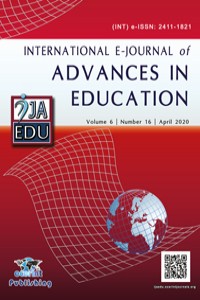Abstract
In recent years, approaches to teaching foreign languages have changed, which is associated with the humanization and humanitarianization of the educational system. Increasingly, language is seen not as the primary means of communication, but as a way of knowing the values of other peoples and cultures. Learning a foreign language through the prism of culture is the basis of the cultural approach.
The article considers this approach, defines its criteria, characterizes the methods and principles of this technology. The authors prove that the cultural approach reflects modern requirements for teaching a foreign language and allows students to master linguistic knowledge and communication skills, together with a whole range of cultural knowledge. In the framework of this approach, the object of education is culture, and speech becomes an auxiliary means of obtaining information. The cultural approach involves the formation of lingua-cultural competence - a system of knowledge about culture and the totality of abilities and skills to operate this knowledge in a specific speech situation.
The article considers the role, content, and leading aspects of the cultural approach in the process of teaching foreign languages. The concepts of cultural approach and cultural education are considered. The functional features, tasks, and conditions for using the cultural approach in the process of teaching foreign languages are determined. Despite some differences in the scientific concepts discussed in the article, the conclusion about the necessity and importance of teaching a foreign language as a component of culture is universally recognized.
It is concluded that these studies became major works that set the vector for studying a foreign language for the coming decades.
The need to further develop issues of co-learning a foreign language and culture lies in the upbringing and educational potential: it contributes to a better understanding of different cultures, helps to realize the diversity and richness of cultures, and to understand the native culture better. This phenomenon will influence not only the formation of the cultural identity of students but also allow them to obtain the necessary skills and abilities to communicate with representatives of other cultures.
Keywords
cultural approach , linguistic and cultural competence language education, foreign language culture, foreign language; cultural dialogue of cultures; sociocultural approach; intercultural communication; multicultural education; foreign language education.
References
- Ter-Minasova, S. (2004). Language and intercultural communication. Moscow., 350 p.
- Furmanova, V. (1994). Intercultural communicative competence and cultural-linguistic pragmatics in the theory and practice of teaching foreign languages: Dissert. Thesis. Moscow.
Abstract
References
- Ter-Minasova, S. (2004). Language and intercultural communication. Moscow., 350 p.
- Furmanova, V. (1994). Intercultural communicative competence and cultural-linguistic pragmatics in the theory and practice of teaching foreign languages: Dissert. Thesis. Moscow.
Details
| Primary Language | English |
|---|---|
| Subjects | Other Fields of Education |
| Journal Section | Research Article |
| Authors | |
| Publication Date | September 10, 2020 |
| Submission Date | March 1, 2020 |
| Published in Issue | Year 2020 Volume: 6 Issue: 16 |
Published and Sponsored by OCERINT International © 2015 - 2025
Contact: ijaedujournal@hotmail.com
International E-Journal of Advances in Education by IJAEDU is licensed under a Creative Commons Attribution-NonCommercial 4.0 International License. Permissions beyond the scope of this license may be available at http://ijaedu.ocerintjournals.org


